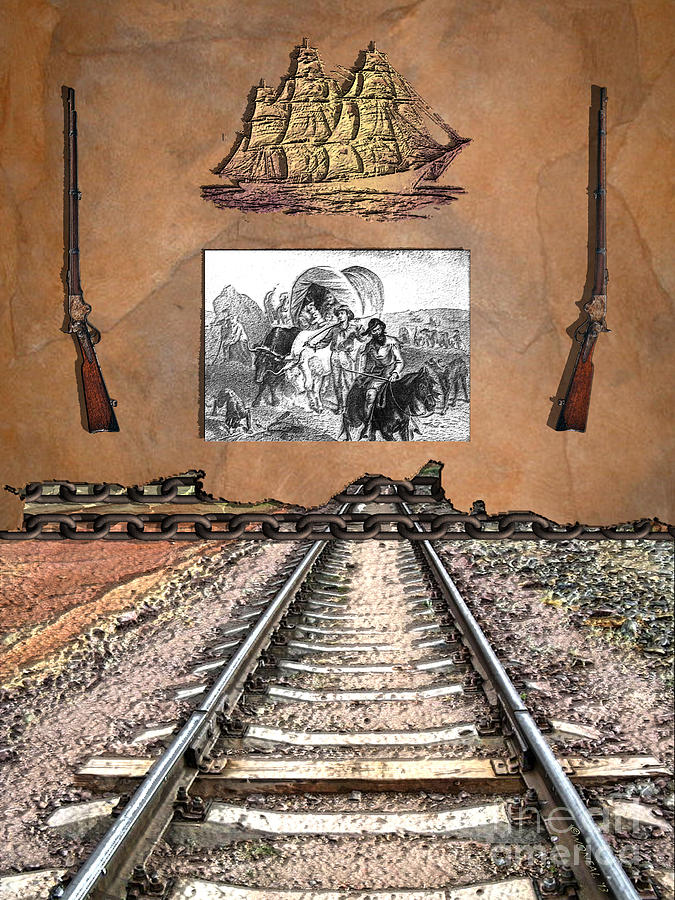

O'Sullivan wrote an article in 1839 that, while not using the term "manifest destiny", did predict a "divine destiny" for the United States based upon values such as equality, rights of conscience, and personal enfranchisement "to establish on earth the moral dignity and salvation of man".
Manifest destiny painting full#
O'Sullivan was an influential advocate for Jacksonian democracy and a complex character, described by Julian Hawthorne as "always full of grand and world-embracing schemes". O'Sullivan, sketched in 1874, was an influential columnist as a young man, but he is now generally remembered only for his use of the phrase "manifest destiny" to advocate the annexation of Texas and Oregon. They are not, as we should expect, all compatible, nor do they come from any one source." Etymology This variety of possible meanings was summed up by Ernest Lee Tuveson: "A vast complex of ideas, policies, and actions is comprehended under the phrase 'Manifest Destiny'. Without an agreed upon interpretation, much less an elaborated political philosophy, these conflicting views of America's destiny were never resolved. While many writers focused primarily upon American expansionism, be it into Mexico or across the Pacific, others saw the term as a call to example. Owing in part to the lack of a definitive narrative outlining its rationale, proponents offered divergent or seemingly conflicting viewpoints. Yet Jackson would not be the only president to elaborate on the principles underlying manifest destiny. Andrew Jackson, who spoke of "extending the area of freedom", typified the conflation of America's potential greatness, the nation's budding sense of Romantic self-identity, and its expansion.


Ill-defined but keenly felt, manifest destiny was an expression of conviction in the morality and value of expansionism that complemented other popular ideas of the era, including American exceptionalism and Romantic nationalism. There was never a set of principles defining manifest destiny it was always a general idea rather than a specific policy made with a motto. Newspaper editor John O'Sullivan is generally credited with coining the term manifest destiny in 1845 to describe the essence of this mindset other historians believe the unsigned editorial titled "Annexation" in which it first appeared was written by journalist and annexation advocate Jane Cazneau. President John Quincy Adams, originally a major supporter of the concept underlying manifest destiny, had changed his mind and repudiated expansionism because it meant the expansion of slavery in Texas. Historian Frederick Merk says manifest destiny always limped along because of its internal limitations and the issue of slavery, and never became a national priority of the United States. The term was used by Democrats in the 1840s to justify the Mexican–American War and it was also used to negotiate the Oregon boundary dispute. Historian Daniel Walker Howe writes, "American imperialism did not represent an American consensus it provoked bitter dissent within the national polity while the Whigs saw America's moral mission as one of democratic example rather than conquest. Historians have emphasized that "manifest destiny" was always contested - Democrats endorsed the idea but the large majority of Whigs and many prominent Americans (such as Abraham Lincoln and Ulysses S.


 0 kommentar(er)
0 kommentar(er)
